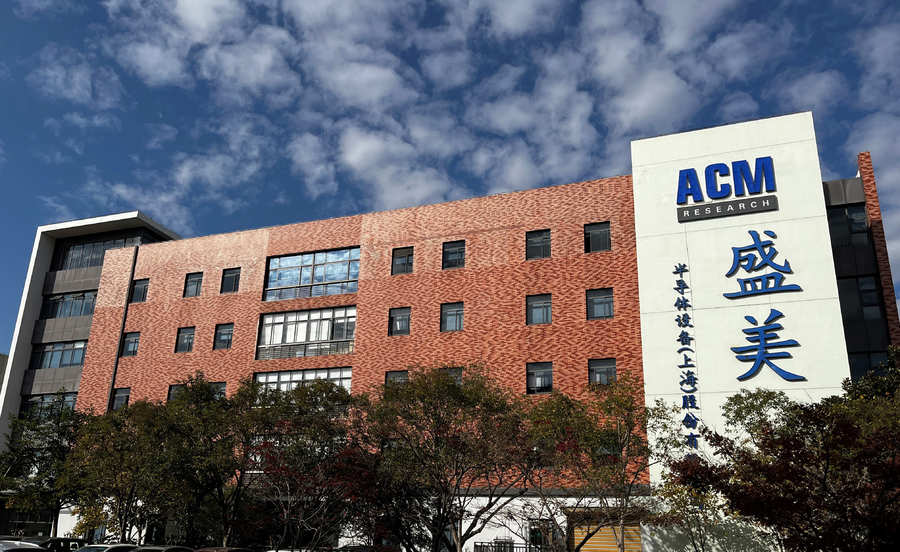You are using an out of date browser. It may not display this or other websites correctly.
You should upgrade or use an alternative browser.
You should upgrade or use an alternative browser.
Chinese semiconductor industry
- Thread starter Hendrik_2000
- Start date
- Status
- Not open for further replies.
The keyword is "passed verification".I found it here. Nanda's photoresist products is also being verified by two companies right now.
They have been validating ArF photoresist for three years already,and still validating as we speak. Looks like the "pass standard" for photoresist is even more strict than equipments.
I can understand fab's technicians are very conservative regarding changing the photoresist in their processes.
Now with rumors that Japanese could ban photoresist too, I'd guess this will give them an extra push to bite the bullet and switch to local suppliers.
For what I understand both local Arf photoresist currently in validation are for dry Arf, not for immersion. Immersion compatible photoresist is not mentioned anywhere.
they banned KrF photoresist last year...I can understand fab's technicians are very conservative regarding changing the photoresist in their processes.
Now with rumors that Japanese could ban photoresist too, I'd guess this will give them an extra push to bite the bullet and switch to local suppliers.
For what I understand both local Arf photoresist currently in validation are for dry Arf, not for immersion. Immersion compatible photoresist is not mentioned anywhere.
I can understand fab's technicians are very conservative regarding changing the photoresist in their processes.
Now with rumors that Japanese could ban photoresist too, I'd guess this will give them an extra push to bite the bullet and switch to local suppliers.
For what I understand both local Arf photoresist currently in validation are for dry Arf, not for immersion. Immersion compatible photoresist is not mentioned anywhere.
Photoresist must be held at a very high standard that's for sure,one batch of low quality photoresist can ruin tens of thousands of wafers,that happened to TSMC just last year
Semiconductor equipment sales orders continue to grow, Shengmei Shanghai's revenue and net profit will both increase significantly in 2022

Jiweiwang News On January 30, Shengmei Shanghai issued a performance forecast saying that based on preliminary calculations by the company's financial department, it is expected that the annual operating income in 2022 will be 2.7 billion to 2.9 billion yuan, an increase of 1.079 billion yuan compared with the same period last year. Yuan to 1.279 billion yuan, a year-on-year increase of 66.58% to 78.92%.
At the same time, Shengmei Shanghai expects to realize a net profit attributable to the owners of the parent company of 600 million to 720 million yuan in 2022, an increase of 334 million to 454 million yuan compared with the same period last year, an increase of 125.35% to 17.042 billion yuan. %. The net profit after deducting non-recurring gains and losses is 620 million to 740 million yuan, which will increase by 425 million to 545 million yuan compared with the same period of the previous year, an increase of 218.38% to 280.01% year-on-year.
Regarding the reasons for the performance growth, Shengmei Shanghai said that benefiting from the increasing demand for equipment in the domestic semiconductor industry, sales orders continued to grow; at the same time, certain results were achieved in new customer expansion and new market development; volume increased steadily.
Do you have a source for that? I have trying to follow Hua Hong for 3 years now but all I hear is about their 28nm and how they are continuously trying to increase the capacity for that.Hua Hong had joined FinFET League 2 years ago. I believe now the yield have improved a lot and ready to produce more complicated CPU.
Bro from a Chinese source hope this help.Do you have a source for that? I have trying to follow Hua Hong for 3 years now but all I hear is about their 28nm and how they are continuously trying to increase the capacity for that.
It seems that the masses still don't understand the current status of China's chip manufacturing technology.
#How about the development of Chinese chips#
1. The two largest domestic companies with the highest technical level are the two. SMIC is the most famous, but it is market-oriented. The real national team is Hua Hong, so fewer people know it. Others are not good enough, and there is no advanced manufacturing process.
2. Assessing the level of technology is two indicators: what is under the American technology system and what level under the de-beautification (not nationally produced) technology system.
3. At present, SMIC has the best development under the American technology system, 14nm mass production yield is up to standard, and the more advanced technology equivalent to 7nm has also made significant progress (but based on DUV lithography machine, TSMC is inherently inferior to EUV lithography machine And Samsung).
4. Hua Hong has made progress on 14nm in the American technology route and is preparing for mass production in 2022. However, Hua Hong shoulders an important task, which is to make the main effort to achieve de-beautification of the production line, which is specifically in charge of its subsidiary ICRD (Shanghai Integrated Circuit Research and Development Center). Among them, the lithography machine is in charge of Shanghai Microelectronics SMEE, the theoretical level is 90nm, and it is rumored that there will be opportunities for 28nm lithography by the end of 2021. However, in the core link of chip manufacturing, SMEE is not available on either SMIC or Hua Hong's production line (it is said that it has put a lot of dust), and only has a good share of non-core links in packaging and testing.4.
5. No one knows what kind of chips can be made with China's de-beautification technology. Theoretically it is 90nm, but there is no verification line that clearly says it can. Therefore, there is no explanation for this issue. It is basically certain that the debugging (45nm or 28nm) of the domestic verification line to beautify is being carried out in Shanghai and Beijing. It would be good if the debugging can be started by the end of the year.
6. If the debugging is passed, the yield rate may be 10%, which has no real economic value, but it is already a great progress. Then start the yield ramp, climbing to 90% is not bad, and less makes sense. This process is very troublesome and often gets stuck. If the yield rate in 2023 can pass, it would be considered extremely ideal. Even if it's not 28nm, 45nm is fine. You shouldn't expect a smooth cut. I personally feel that it will be stuck for a while according to the law of technology.
7. There are also some attempts to beautify. SMIC has given domestic machines the opportunity to test on the production line. This is very complicated, and it's not clear how to deal with it. People in the chip manufacturing industry are generally more conservative and will be laughed at if you zoom in.
8. Public opinion still doesn't understand or believe in technical difficulty. In terms of development history, this is the high-precision field that China is least good at, and it has been involved in many high-tech shortcomings. TSMC would die without external support. And China needs to solve these conditions one by one, and the workload is extremely huge. Zhang Zhongmou said that the gap between mainland China is more than five years, which means that under the American technology system, the gap can still be discussed. If it means to beautify the technical system, no one can actually give a time estimate, but it must be more than ten years. It is equivalent to TSMC plus the entire technology system of the industry. Compared with China's independent technology, it is really not suitable for comparison. First, we must strive to reach the level that can be said to be ten years behind.
9. Regarding the issue of overcapacity under the American technology route, this is still something to talk about. The current strategy is to increase the production capacity of American technology chips even if there is a risk of supply cut-off in the United States. The United States and Europe are increasing chip production capacity, and they are concerned about advanced manufacturing processes. China is not yet qualified to talk about the production capacity of advanced processes, just look at the reports of SMIC and Hua Hong Semiconductor.
10. SMIC is the largest in mainland China, but only has a market share of 4.8%. The proportion of SMIC's 14nm revenue to total revenue is almost negligible, and it is only 5.0% combined with 28nm. The main revenue depends on 40-45-55-65nm and 0.15 micron. The reason should be that there was no order from major customers, and Huawei's 14nm order did not have a great impact. This is not overcapacity, but it shows that China's chip industry needs to catch up in all aspects, and chip design companies must dare to challenge 14nm and successfully sell sufficient quantities, just like Huawei's 14nm mobile phones. In this case, it is too simple to use the sentence "28nm overcapacity" to summarize the problem. If the mainland company can place orders for 14nm and 28nm, it will be a very good thing.

Allegedly, YMTC is laying off 10% of its workforce
Top Chinese memory chip maker YMTC said to be laying off 10 per cent of workforce after US sanctions
- The laid off workers were identified as ‘underperformers’ in their 2022 performance review, according to a source familiar with the situation
Top Chinese memory chip maker Yangtze Memory Technologies Corp (YMTC) is laying off up to 10 per cent of its workforce less than two months after it was added to a US trade blacklist.
According to one source familiar with the situation, the laid off workers – representing about 10 per cent of the total – were internally identified as “underperformers” in their 2022 performance review.
If confirmed, the lay-offs would amount to several hundred people as YMTC employs nearly 6,000, according to the corporate registry database Qichacha.
The report gained public attention after one of the laid off YMTC employees, who said he worked at the company for more than four years, posted on Chinese social media platform Zhihu that the company asked him to pay back over 400,000 yuan (US$59,000) for a subsidised apartment he bought in Wuhan, where the headquarters of YMTC is located. The employee confirmed his identity with the South China Morning Post but declined to be named because of the sensitivity of the matter.
The YMTC employee told the Post that the lay-offs affect “almost all departments” and range from 5 to 10 per cent of staff. Dismissed employees who purchased subsidised housing but worked at the company for less than five years were asked to repay amounts ranging from 300,000 yuan to 1 million yuan, he added.
- Status
- Not open for further replies.

